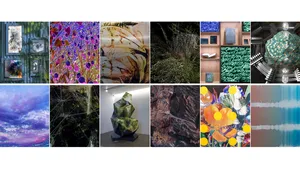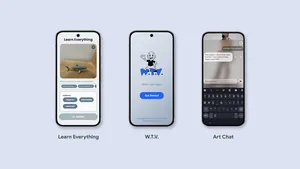Exploring Afrofuturism on Google Arts & Culture
AstroSankofa by Quentin VerCetty from the Carnegie Hall collection on Google Arts & Culture
Regina Agyare from the Heritage and Cultural Society of Africa Foundation on Google Arts & Culture
Wangechi Mutu poses with model of MamaRay by LaToya Ruby Frazier from the Nasher Museum of Art at Duke University collection on Google Arts & Culture
Kabangu (series) by Osborne Macharia from the African Artists' Foundation collection on Google Arts & Culture
Before Yesterday We Could Fly: An Afrofuturist Period Room from The Metropolitan Museum of Art collection on Google Arts & Culture
On the evening of February 13, 1893, soprano Sissieretta Jones became the first Black American artist to perform in Carnegie Hall’s main auditorium, today known as Stern Auditorium / Perelman Stage. When the Hall’s cornerstone was laid, Andrew Carnegie proclaimed that “all good causes may find here a platform.” In keeping with that spirit, this key moment of Black History at Carnegie Hall was soon followed by many others. Today, the Hall continues to celebrate and engage audiences in the Black American cultural legacy across all genres of music; through performances on its stages and across New York City; through the work of the Hall’s education and social impact arm, the Weill Music Institute; and through free digital resources like the Hall’s recently launched Timeline of African American Music.
This February and March 2022, Carnegie Hall invites New Yorkers and the world to participate in a journey of discovery through one of its signature citywide festivals — Afrofuturism — a movement where music, visual arts, science fiction and technology intersect to imagine alternate realities and a liberated future viewed through the lens of Black cultures.
Together with Google Arts & Culture, and coinciding with Black History Month, we are pleased to invite audiences around the world to learn more about this exciting movement as part of a new online hub: The Afrofuture is Now.
On the hub, explore the inspiration behind AstroSankofa, the festival’s signature artwork by Afrofuturist artist Quentin VerCetty, dive into Afrofuturism in Black Music (the latest chapter from the Timeline of African American Music), and visit an online version of Carnegie Hall’s Zankel Hall exhibition, The Black Angel of History, curated by Dr. Reynaldo Anderson, executive director and co-founder of the Black Speculative Arts Movement.
Carnegie Hall is proud to partner with Google Arts & Culture and to be part of this new chapter, The Afrofuture is Now, where you will also find incredible collections and stories from 20+ other cultural institutions to explore Afrofuturism. From the Nasher Museum of Art at Duke University, get to know artist Wangechi Mutu, a creative force within the Afrofuturism movement. Or you can see the work of the artists at The Met, who’ve rebuilt a speculative future home for New York’s Seneca Village residents, reimagining the past, present and future of the community. Then, travel across the Atlantic to see Afrofuturism in action and learn about how African entrepreneurs are leapfrogging into the future with highlights from the Heritage and Cultural Society of Africa Foundation.
We’re hoping these online resources will be your first step into exploring the dynamic world of Afrofuturism — and if you are in New York City this March, join us for one of many Afrofuturism Festival performances at Carnegie Hall, plus talks, performances, exhibitions, and online offerings presented by 70+ leading cultural and academic institutions across New York City and beyond.






